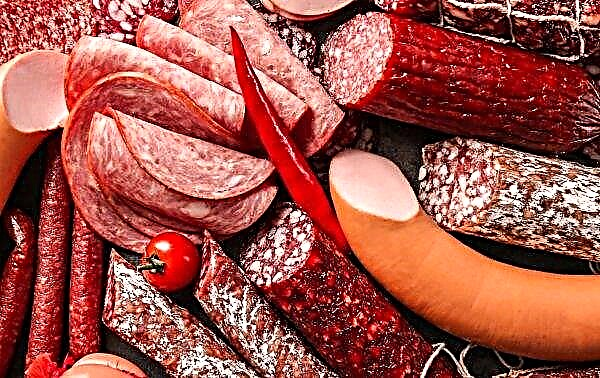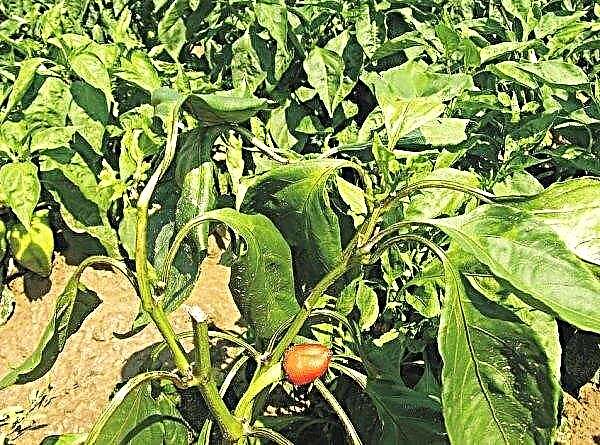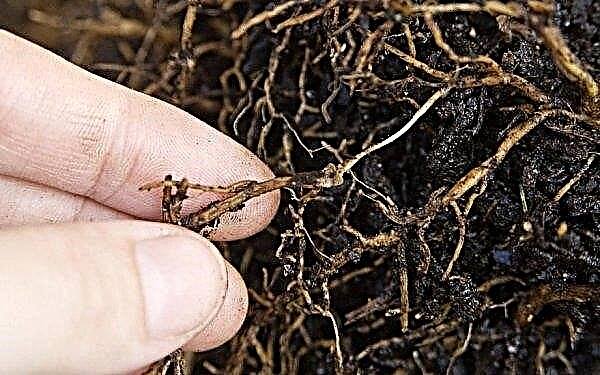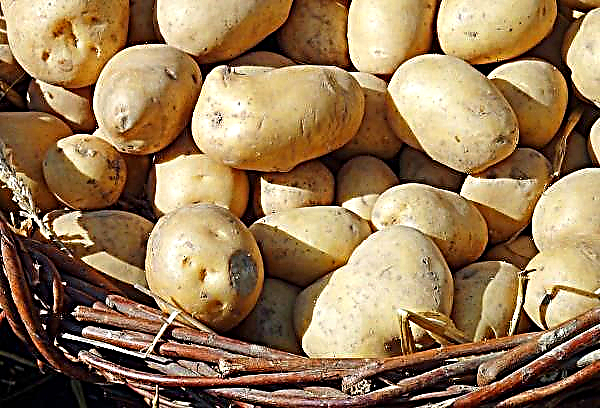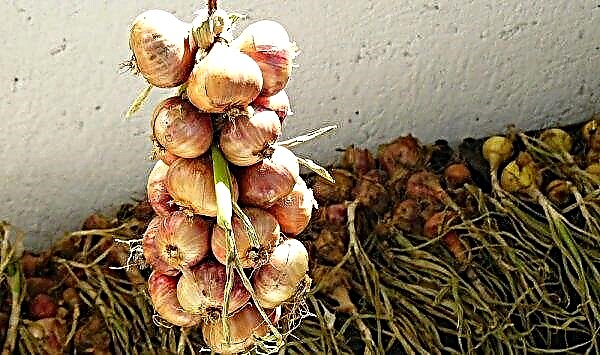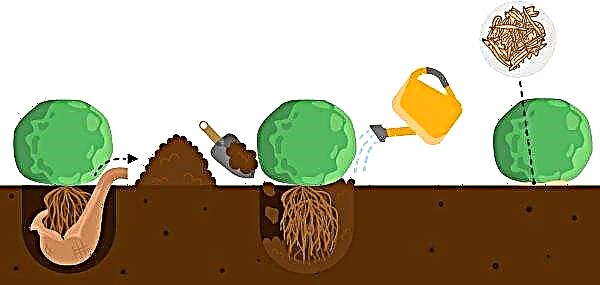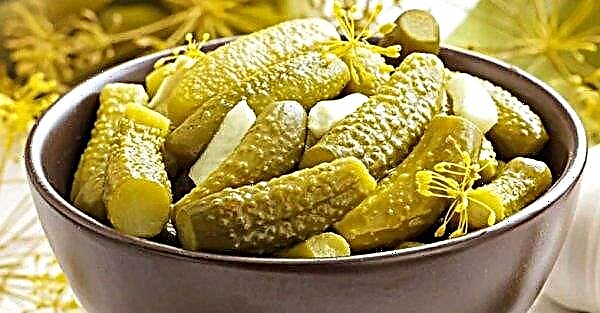There are many mushrooms on the planet. So far, only 100 thousand species have been studied by science, but nobody knows how many of them actually are. You can find mushrooms with different, sometimes unusual colors, for example, fruits in which the hat and leg are exclusively white or the leg is white, and the hat is red, orange, yellow and even black. These "beauties" can be found in different parts of the world, many of them in Russian forests. What they are called and whether they are edible is considered in the article.
Mushrooms with a white hat and a white leg
In nature, there are many mushrooms with a white color. Some mushroom pickers are wary of taking them, because many are accustomed to brown and reddish hats of forest gifts, considering white unnatural. In fact, among the “albino” mushrooms there are many not only tasty, but also useful representatives, although grebes are also found.
Important! Without exception, all fungi have the ability to accumulate toxins, salts of heavy metals. They must not be collected close to freeways, close to industrial enterprises and waste disposal sites.
Champignon
Perhaps there is no person who would not know about the existence of these mushrooms. Even without being a mushroom picker, everyone at least once tasted champignons with their excellent aroma and taste. By the way, they can be consumed raw and it is even recommended to do it periodically, since they contain a lot of useful substances that are perfectly preserved without heat treatment.
Today, champignons have learned to grow at home, in beds, in cellars, as well as for further implementation. In nature, they grow in areas with a temperate climate, like meadow, forest and even garden soils. Harvest fruits from May to October.
Champignons, as a rule, are completely white, less often you can find a slightly brownish color. The hat has the shape of a hemisphere, but eventually acquires a more flat shape with a diameter of 6-12 cm. The upper cover is often velvety, but sometimes scaly skin can also be found.
The leg is straight and even, slightly expanding closer to the base. The mushrooms are neat and small, 7–10 cm high. The flesh is white fleshy, but if broken, it quickly changes color to pink upon contact with air.
Boletus white
White boletus can be found in pine forests and spruce forests with moist soil. Harvest time is from August to October. Boletus is edible, young specimens are often pickled, and adults are fried and stewed.
White boletus - large mushroom. He has a white fleshy hat, the diameter of which sometimes reaches 25 cm. The lower surface is spongy, consists of small pores, at first also white, but eventually acquires a gray hue. The flesh is dense, with a break becomes black. The tall slender leg of the boletus extends downward, the surface is characterized by the presence of oblong scales.
The breast
Going into the forest for white breasts, mushroom pickers rarely come with empty bast baskets. For the most part, the mushrooms grow in groups, for which they got their name, which came from the Old Slavonic word "Georgia" - a bunch. They are collected in the forests of the Volga region, Siberia from mid-summer to the end of September.
Important! When cooking, white breasts secrete bitterness, so they must first be boiled in salted water.
White breasts are clearly visible even from afar, as they are characterized by an impressive dense hat with a diameter of 10–20 cm. Its color is mainly white, but yellowness can sometimes be present.
In young specimens, it is flat, but eventually becomes more funnel-shaped. If you look closely, you can see on the edges of the cap, bent inward, a small fluff.
 White breasts are also called “raw” or “wet” due to the fact that the mushroom's hat is really wet and sticky to the touch; plant debris often sticks to it. The lower part is covered with frequent plates of the same color as the whole hat. The leg is cylindrical in shape, 6–10 cm high, hollow inside.
White breasts are also called “raw” or “wet” due to the fact that the mushroom's hat is really wet and sticky to the touch; plant debris often sticks to it. The lower part is covered with frequent plates of the same color as the whole hat. The leg is cylindrical in shape, 6–10 cm high, hollow inside.
Raincoat
Small raincoats are harvested from late spring to mid-autumn. They grow in groups in any forest, since they are not at all picky about soil and weather conditions. Mushroom pickers often bypass them, and in vain - raincoats taste good and contain many useful substances. For example, if you attach the cut fruit to the wound, it will quickly heal, which indicates the presence of bactericidal properties.
There are many varieties of raincoats, but only a few species are suitable for eating, among which a raincoat white gigantic and giant spherical. Both species are characterized by a snow-white color. The difference is in size and some external signs.

For example, the shape of an ordinary white raincoat is initially spherical, and then changes to pear-shaped. The size is small, a hat with a diameter of 6-10 cm. In young specimens, when pressed, it breaks, and in adults, it breaks with time. Leg - straight, thick, 5–7 cm high.
Giant representatives and in a mature state have the shape of a large ball, the diameter of which can reach 40 cm (this variety is rare). The leg under it is almost invisible.

White row
This mushroom looks, at first glance, appetizing, causing the sympathy of mushroom pickers. However, white ryadovka (tricholoma) is a poisonous representative of the mushroom kingdom, which can cause slight intoxication, so you need to know how it looks so as not to confuse it with an edible mushroom.
From the name it is clear that the type of rows in question is characterized by a white color, in which the mushroom is completely painted - from the base of the leg to the top of the cap, including the inner plates. The dimensions are impressive: a smooth dry hat with a diameter of up to 12 cm has a dense structure.

At first it is convex, but then it becomes flat with the edges sloping. In older specimens, sometimes the hat darkens, acquiring a gray tint in the center. On the inside are sinuous plates.
The leg is elastic, cylindrical in shape, up to 10 cm long, with a powdery coating. Over time, the base of the leg darkens, becomes resinous, sometimes cracking. The mushroom pulp at break exudes a specific pungent odor reminiscent of musty mold.
White hygrophor
Another representative of the albino mushrooms. Hygrophors are represented in nature by different species, but they are all edible. As for the white hygrophor, it is popularly called “sweetened” because of a slightly sweetish taste.
Basically, the mushroom is used to make pickles, and young specimens are taken. It grows in meadows and forests, forming mycorrhiza with herbs and trees, and prefers spruce forests, humid places and lowlands. The collection time is from August to early October.
The diameter of the white hygrophore hat is 4–11 cm. In young representatives, it is bell-shaped, and in adults, it is open, sometimes covered with mucous skin or slight pubescence. There are rare plates in the inside of the cap. Leg 4-10 cm long, slightly curved with scaly bands.
With a red hat
Mushrooms with a red hat can often be found in the forest. And we must pay tribute - they look attractive and noticeable against the background of gray-brown coniferous soil cover of the forest. But you need to consider that not all of these "handsome" are suitable for use, many of them are poisonous and can cause severe poisoning.
Did you know? Plasmodium mushroom grows on the territory of Russia, which is able to move. For several days he is able to "crawl" a small clearing.
Red boletus
Red boletus is a harmless edible mushroom that can no doubt be folded into a basket. From it you can cook a lot of tasty and healthy dishes, as well as make preparations for the winter. The species grows mainly in coniferous forests; fruits can be harvested from June to October.
You can distinguish the view by a bright red-orange hat, for which the people called the mushroom “blood-red”. Its diameter is from 5 to 15 cm. At the "young" age, the hat looks convex, as if "stretched" over the leg, but opens over time, forming an open platform with a velvety skin.

The boletus pulp is initially dense and white, but when cut, it quickly turns blue-black. The leg is stable, cylindrical in shape with a thickening down. Height reaches 15 cm, diameter - up to 5 cm. The leg goes deep into the ground and in the lower part is characterized by a green tint, covered with fibrous longitudinal scales.
Russula marsh
This mushroom is also called a "bobber". It grows more often in moist coniferous forests on the banks of marshes, actively fruiting from June to September. Wet russula belong to edible mushrooms: they are boiled, fried, used to make soups, but they are not suitable for pickles.
True, mushroom pickers do not always favor russula due to the fact that it easily breaks, but if you manage to bring the mushrooms safe and sound, you can prepare a noble dinner.
The hat has bobbins with a diameter of 6 to 15 cm. In young specimens, it is bell-shaped, and in adults, it is straightened, with serrated edges. The peel is red-orange, shiny, the color in the center is much darker, reaching red-brown. The russules themselves are low. The rise of the legs rarely reaches 8 cm, while it is quite elastic, fleshy.

Pungent Russula
Previously, this fungus was classified as inedible, since its chemical composition contains the poisonous substance muscarine, which in large quantities can cause disruption of the gastrointestinal system.
Today it belongs to the 4th category of edible varieties, it can be consumed, but only after thorough heat treatment. Since the burning russula has a pungent taste, the mushroom is suitable exclusively for salting.
In appearance, the mushroom is very similar to the Russula marsh - has a bright red or purple-pink, saucer-like hat with a sticky glossy surface. The hat retains its shape up to a diameter of 10 cm; in older mushrooms, it begins to crack. The leg is elastic, cylindrical in shape, grows up to 11 cm in length.
 Since the swamp and scorching russula are very similar in appearance, a fair question arises: how to distinguish them. To do this, lightly try the flesh of the cap with your lips (do not bite!). If after a few minutes you feel a strong tingling sensation on your lips, then this russula is searing.
Since the swamp and scorching russula are very similar in appearance, a fair question arises: how to distinguish them. To do this, lightly try the flesh of the cap with your lips (do not bite!). If after a few minutes you feel a strong tingling sensation on your lips, then this russula is searing.
Red fly agaric
Ever since school, everyone knows that fly agaric - a poisonous mushroom. And although people say that it can also be cooked and eaten by boiling many times, this is not recommended. Amanita muscaria causes severe poisoning, even fatal.
Amanita is easy to recognize - this majestic mushroom usually rises above the grass and attracts with its bright red hat, which cannot be ignored. The hat in the adult specimen is open, shiny, with a diameter of up to 20 cm, with clearly visible white blotches in the form of flakes. The leg is high, hollow, in the upper part there is a hanging ring.
With an orange hat
Orange mushroom caps stand out in an environment of forest soil no less spectacular. In the literal sense, this color is rare, it can mainly be seen after it has rained, and the mushroom caps glisten in the sunlight. More often the shade borders on brown, rusty or has a red tone.
Fox
The peculiarity of the chanterelles is that they are never worms, and all thanks to the substance they contain - hinomannosa, which can kill helminth larvae. Mushrooms have a very pleasant taste and aroma, for which they are appreciated by mushroom pickers. They grow in any forests, often next to a birch, pine and coniferous trees.
 The cap of the chanterelle is not distinguished by the correctness of the forms: it can be convex, concave, funnel-shaped, and the edges have some waviness. The diameter of the hat varies between 3-12 cm. Color - yellow-orange.
The cap of the chanterelle is not distinguished by the correctness of the forms: it can be convex, concave, funnel-shaped, and the edges have some waviness. The diameter of the hat varies between 3-12 cm. Color - yellow-orange.
The leg reaches a maximum length of 10 cm, but this is rare. As a rule, chanterelles grow small, up to 6–8 cm. The leg is connected to the cap by internal plates.
In young mushrooms, it may be white, but over time it acquires a yellowish tint and may even become the same color as the top skin of the hat. The pulp is white, fleshy, the smell resembles the aroma of dried fruits.
False egg
Honey mushrooms are mushroom pickers. These small mushrooms growing by families are very tasty in any form. But edible mushrooms are very easy to confuse with false ones, so when going to the forest, you need to understand their differences well.
As with real mushrooms, the false legs are very thin, often curved, hollow inside. The hats are almost flat, about 7 cm in diameter, painted in bright colors, among which a rusty color predominates, which is why mushrooms are also called "brick-red mushrooms." The flesh is yellowish in color and bitter in taste. Mushrooms are very poisonous.

Birch
In nature, there are about 10 species of boletus, 9 of which grow on the territory of Russia. The most common common boletus. It is not enough to say that it is edible, the mushroom is characterized by amazing taste characteristics, suitable for any cooking method. The name of the mushroom precisely emphasizes the place of growth - birch groves.
The mushroom cap is brown-red, and sometimes completely brown (depending on the climatic features of a particular region). It has a convex, like swollen shape, with a diameter of 5-12 cm. The leg reaches a length of 4 cm, white or grayish, cylindrical in shape, but tapers downward.
Mushroom pickers should be careful, as the common boletus boletus has a double - gall mushroom. He is very poisonous. To distinguish a toadstool, you need to cut the mushroom along. In the bile fungus, the flesh at the cut site quickly turns red.

With a yellow hat
The concept of “yellow hat” is arbitrary. This category includes mushrooms that have signs of a sunny color, which may be darker or, on the contrary, faded. Some mushrooms have a yellow hat at a young age, but after a while it takes on darker colors.
Butterdish
It is difficult to confuse butterflies with any other mushrooms, thanks to their hat with a sticky, mucous skin, which is why the name of mushrooms went. Color can be represented in different interpretations, but yellow-brown and gray-olive tones predominate.
Young mushrooms resemble the shape of the hemisphere, and in adults the hat looks straightened, sometimes with raised edges. Leg - white with a yellowish tint, 4–12 cm long, with a membranous ring.

Butterflies are edible and are loved by many connoisseurs of mushroom dishes. The only thing that creates the problem is their cleaning, since it is advisable to remove the top sticky film from the mushrooms, otherwise they will become stiffer during cooking and lose their aesthetic appearance.
Porcini
Borovik can rightfully be called the king of the mushroom kingdom, since its nutritional and taste qualities are beyond doubt. Yes, and his size, he may well claim this post. The cap of the cep can reach a diameter of 30 cm. A convex hemispherical shape is clearly visible.
The skin is smooth and may crack in dry weather. In young mushrooms, the hat is light, the color varies from almost white to lemon yellow, orange. It darkens with age, acquires a red-brown tone.
 The leg of the mushroom is massive, barrel-shaped. With an average length of about 12 cm, the thickness is 6–8 cm.
The leg of the mushroom is massive, barrel-shaped. With an average length of about 12 cm, the thickness is 6–8 cm.
The lower part of the cap is covered with a tubular layer with a recess near the foot. In young mushrooms, it is white, but then turns yellow, acquiring an olive shade. The pulp of the mushroom body is juicy-fleshy with a mild taste.The aroma is most evident during cooking.
With a black hat
And such mushrooms are found in our forests. Perhaps not every fan of "mushroom hunting" noticed them on his way or was simply afraid to take them. On the one hand, this is correct, since you need to collect only those mushrooms that you know well. And on the other hand, it’s worth asking what mushrooms are distinguished by a resin hat, because many of them are tasty and healthy.
Coprinus gray
Despite the fact that the adjective “gray” sounds in the name, in fact, many adult specimens are characterized by significant signs of a resinous color. Most often, mushrooms can be found in central Russia.
 They grow in sparse bunches, preferring rotten stumps, forest roads.
They grow in sparse bunches, preferring rotten stumps, forest roads.
You can find gray coprinus in places of grazing animals, on dung heaps. This fact often discourages mushroom pickers, nicknamed the mushroom "dung beetle". The shape of the cap is bell-shaped, with a diameter of not more than 10 cm. The upper cover is smooth, the edges are uneven. In adult mushrooms, hats split into separate fibers. The leg is thin, 1–2 cm in diameter.
Did you know? The creepiest mushroom in the world — Anthurus Archer. Outwardly, it resembles a starfish or an octopus of bright red color, has a disgusting smell. The people got the name «Fingers of the devil».
Gray fox
This is one of the representatives of the Lisichkovs, which is often ignored by mushroom pickers due to their external characteristics.. The mushroom is a fruiting body, where the leg and cap are a single whole, i.e. there is no pronounced border. The hat may have a diameter of 2 to 15 cm, deepened in the center, and the edges bent, wavy.
Opened from above, a gray-black, and sometimes saturated resinous hat, gradually narrows and passes into the leg. The latter has a light ash color, curved, hollow inside. The mushroom pulp is tender and elastic, with a pleasant tart taste.
 Gray chanterelles grow mainly in deciduous and mixed forests. You can collect them from July to early October. Mushrooms are suitable for cooking in any form.
Gray chanterelles grow mainly in deciduous and mixed forests. You can collect them from July to early October. Mushrooms are suitable for cooking in any form.
Going to the forest for mushrooms, try to find out as much information as possible about what species grow in your area, what they look like, which ones are edible. At the slightest doubt, it is better to abandon the fungus, even if it has a stunningly attractive appearance.

